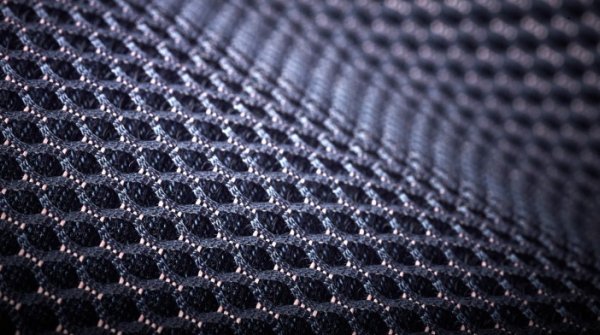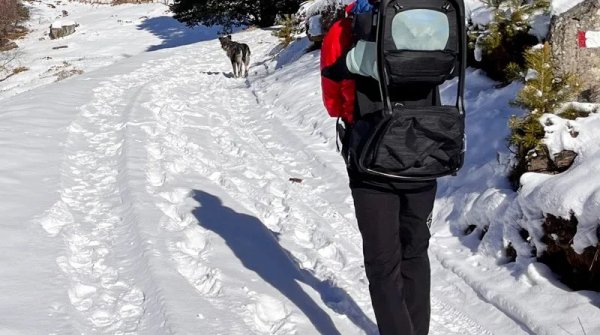
Rain is dripping down your face, your shoulders are slowly soaking, your pants are sticking to your calves and a puddle is slowly but steadily forming in your shoes.
Everyone who has been caught in a downpour in poor clothing has probably experienced something like this at some point. Modern rainwear helps against this - and now has such small pack sizes that an emergency kit can be part of any outdoor activity.
Practical innovations
Self-packing, super light, lots of extra pockets, reflectors, adjustable hood, adjustable waistband, side openings for access to pockets in the clothing underneath - manufacturers of waterproof functional clothing advertise with such gadgets.
When deciding what to buy, however, you should bear in mind that what is particularly waterproof has very few extras. Every opening and every seam means one more potential weak point, and even the best workmanship can't change that.
Rain pants with zippers on the legs that can be opened quickly and widely have proven to be practical. This allows them to be pulled over the shoes and, with their integrated gaiters, protect the upper shoe at the same time.
Not only the jackets, but also the pants are available in many fashionable prints, the "Homy Rainpants" from the German sports outfitter Vaude, for example, in a jeans look.
Waterproof and breathable at the same time
Many functional jackets for outdoor activities meet the general criterion of being "waterproof," but they differ significantly in this respect. For example, textiles are considered waterproof from a water column of 1,500 mm. However, it depends on the duration and intensity of the rain whether they can actually keep the promise.
Only with the highest water column of 10,000 mm can you really be reassured in all weather conditions that it remains permanently dry under the clothing - at least as long as the seams and zippers are also prepared accordingly. The rain jackets of the brand manufacturers are impregnated when purchased new. After that, proper care determines the lasting functionality.
Rain protection = Hardshell
The outer weather layer of clothing is called shell layer in technical jargon. Hardshell with PU coating (polyurethane) is the most robust material and absolutely waterproof, but only allows the body's moisture to escape to a limited extent.
Softshell, on the other hand, is breathable but only water repellent. Only multilayer textiles with membranes such as Gore-Tex are truly waterproof and yet breathable. Water vapor passes through the pores (or molecules in the case of hydrophilic membranes) from the inside to the outside, but not water droplets from the outside to the inside.

Weak point: Seams and zippers
Because sewing machines leave holes that are too big, waterproof textiles are generally not sewn, but glued or taped with special tapes.
Zippers are now also available in waterproof quality, even two-way zippers. However, most manufacturers only use water-repellent models and achieve the waterproof effect via covers combined with Velcro fasteners.
Sealing is the be-all and end-all
Normal use and abrasion from backpack straps, for example, reduce the functionality. Sweat and dirt clog the pores of the membrane layer, the surface becomes saturated with water, and heat builds up inside. Even the most expensive functional jacket must therefore be cleaned regularly and the impregnation refreshed afterwards.
Follow care instructions
Rainwear may (usually) be washed in the washing machine, but only in gentle cycle without spinning and at low temperatures up to 40 degrees. It is not necessary to use expensive special detergent.
It is important to use liquid detergent instead of granular powder so that the pores of the membranes do not stick together. Another rule of thumb is to use only as little detergent as necessary and to rinse at least twice extra. Especially for new wax machines with low water consumption, the extra rinses are necessary.
Before washing, all zippers, pockets and Velcro straps must also be closed so that the glued or taped seams are not overstressed or even torn.
Putting it to the test
If the rainwear does let water through, the impregnation urgently needs to be refreshed. The easiest way to do this is with heat, either in a tumble dryer or with an iron.
In the dryer, the clothes are heated at a maximum temperature of 60 degrees for about 30 minutes, with the iron with a cloth in between on the lowest setting.
If heat alone is no longer sufficient to activate the impregnation, an additional impregnation spray must be used and worked in thoroughly with a sponge or cloth. This is usually necessary after every second wash.
Beading and shaking off instead of impregnating?
The market launch of a new type of technology from Gore-Tex, the Gore-Tex Active membrane, is still announced for the end of 2015.
For the first time, the novel laminate is to consist only of the membrane and the lining and dispense with the textile top layer. This also means that impregnation is no longer necessary. What doesn't bead off can simply be shaken off.





